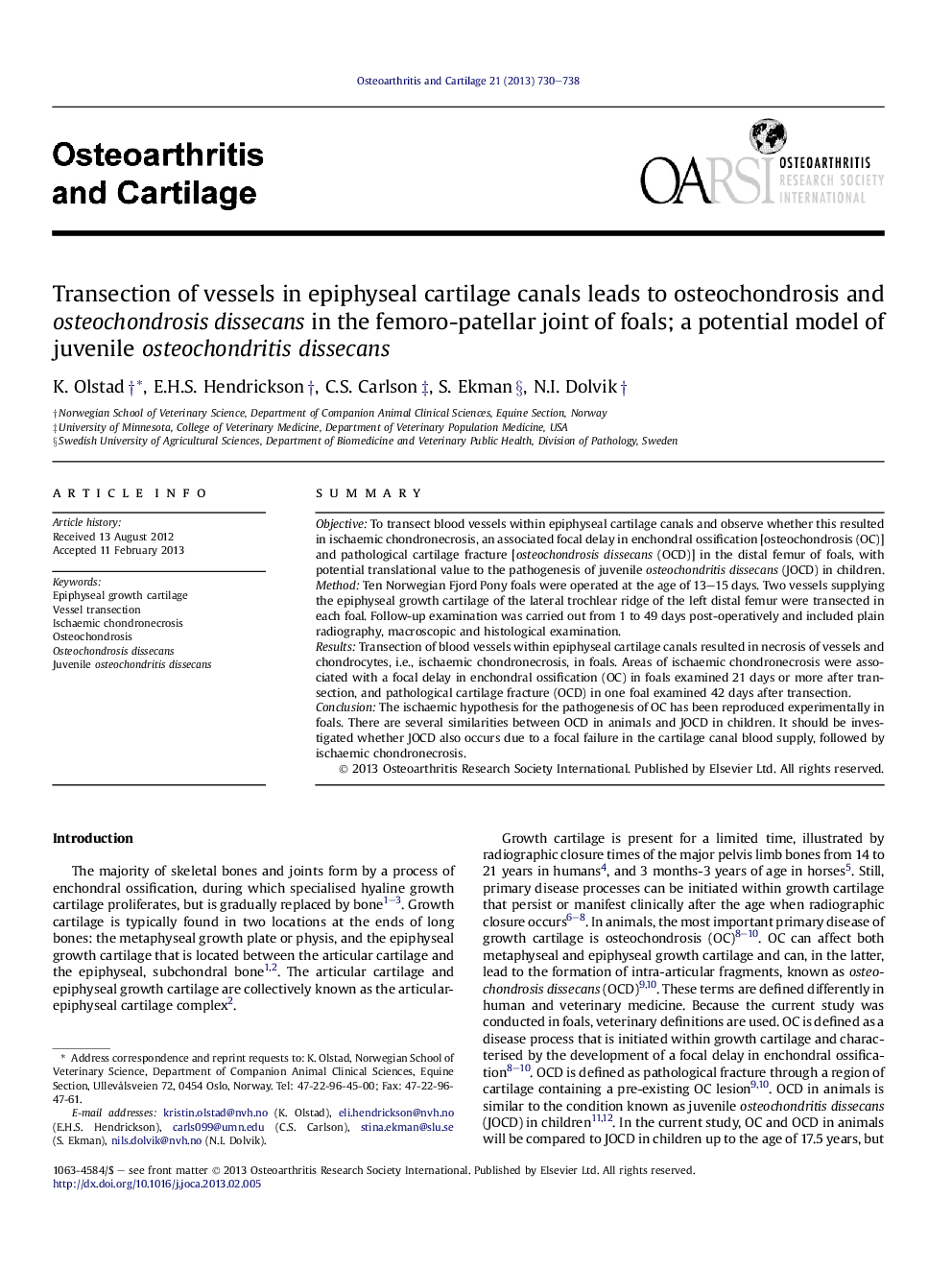| Article ID | Journal | Published Year | Pages | File Type |
|---|---|---|---|---|
| 3379737 | Osteoarthritis and Cartilage | 2013 | 9 Pages |
SummaryObjectiveTo transect blood vessels within epiphyseal cartilage canals and observe whether this resulted in ischaemic chondronecrosis, an associated focal delay in enchondral ossification [osteochondrosis (OC)] and pathological cartilage fracture [osteochondrosis dissecans (OCD)] in the distal femur of foals, with potential translational value to the pathogenesis of juvenile osteochondritis dissecans (JOCD) in children.MethodTen Norwegian Fjord Pony foals were operated at the age of 13–15 days. Two vessels supplying the epiphyseal growth cartilage of the lateral trochlear ridge of the left distal femur were transected in each foal. Follow-up examination was carried out from 1 to 49 days post-operatively and included plain radiography, macroscopic and histological examination.ResultsTransection of blood vessels within epiphyseal cartilage canals resulted in necrosis of vessels and chondrocytes, i.e., ischaemic chondronecrosis, in foals. Areas of ischaemic chondronecrosis were associated with a focal delay in enchondral ossification (OC) in foals examined 21 days or more after transection, and pathological cartilage fracture (OCD) in one foal examined 42 days after transection.ConclusionThe ischaemic hypothesis for the pathogenesis of OC has been reproduced experimentally in foals. There are several similarities between OCD in animals and JOCD in children. It should be investigated whether JOCD also occurs due to a focal failure in the cartilage canal blood supply, followed by ischaemic chondronecrosis.
